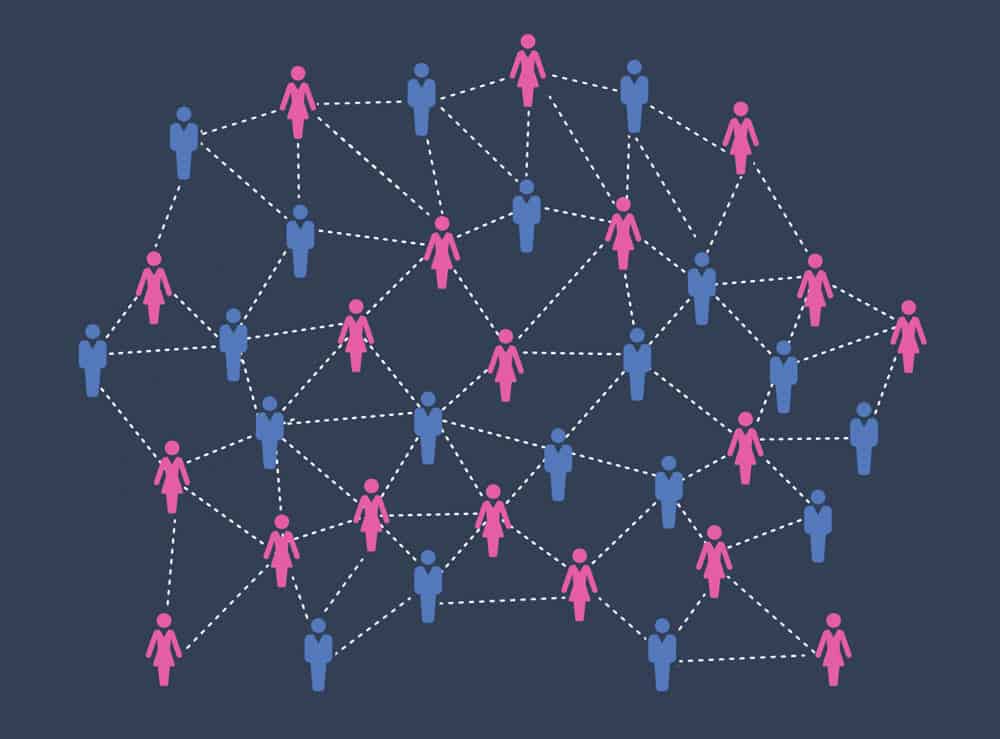Network structures are more beneficial to business than hierarchies, says Robert L Cross
Network is a word which has become a staple of our daily vocabulary. Whether we’re talking about the evolution of online social networks or the importance of effective networking to our careers and improving business practices, the word itself takes on various nuances of meaning and sometimes we forget the true importance of a well-functioning network.
Recently I had the great honour of speaking at the Irish Management Institute (IMI) Talent Forum, where I talked about the nature of networks within organisations. Together with Annie McCallum, (Head of Executive Development, Careers at Associated British Foods) we spoke about how successful organisations leverage their employee networks for enhanced performance.
Managing talent is a major issue facing businesses across the globe, but it’s crucial to bear in mind that without a working organisational structure, talent will not be utilised or nurtured properly, leading to frustration and negativity among the workforce.
I’m a firm believer that network structures within organisations are much more beneficial than the traditional hierarchal structure. By implementing a network structure, which pairs various elements of the management team with staff in many other roles, connectivity between high performers can be managed more effectively.
Factors causing silos
As part of our talk at the IMI, we had a very productive table discussion where participants thought about the factors which cause the development of silos and too much hierarchy in organisations. Some of the interesting reasons given were: a lack of common purpose, different compensation structures, hierarchy preventing collaboration, and unconscious bias – gravitating towards people who are like us.
Bridge silos by integrating networks at the points which will make a difference and add value
These issues are common in most organisations, and there are various ways to overcome them but some of the most effective solutions can be derived from the network structure. When an organisation is set up in this way, individuals can use their network in a more targeted fashion; reaching into their network when overwhelmed or facing a big challenge.
Organisations and networks
At an organisational level, changing our approach to staffing projects can help reconfigure the network. Choosing the same people, who are generally ‘nodes’ of communication, perpetuates the same people turning up, causing them to be overwhelmed. Picking differently from the middle tier and implementing rotation programmes can be a helpful approach.
As part of our workshop, Annie and I used case studies to show what successful organisations do differently when it comes to employee networks.
Over time we have found that organisations who do better tend to manage the centre better, meaning they know when someone is overloaded.
Effective organisations know how to manage the fringe and they understand how to draw people in who might be isolated due to structural or practical considerations.
They bridge silos by integrating networks at the points which will make a difference and add value.
By acting proactively, these organisations encourage people to connect and respond without going through the leader.
Achieving change in your network
When looking at your organisation, it’s important to remember that “bigger is not better” when it comes to networks at a personal or organisational level. It is much more nuanced and has been proven that a more targeted approach to developing networks can have a greater impact on organisational and individual performance.
Like all good business practices, building an effective network takes time but there are certain things we can focus on in our own working lives to facilitate this success. In the workshop, we realised that there are some key traits to people who form effective networks. These are people who do things to decrease collaborative overload; they build non-insular networks and, crucially, they are energisers.
Most of us have to work hard at developing these skills, but the first step is simply realising the strength of the potential network around us, and finding out how we can contribute to make it stronger.
About the author:

Rob Cross
Robert L Cross is a professor in the management department of University of Virginia’s McIntire School of Commerce. For almost twenty years, his research, teaching and consulting have focused on applying social network analysis ideas to critical business issues for actionable insights and bottom-line results. He has worked with approximately 300 leading organisations (companies, government agencies, and non-profit organisations) on a variety of solutions including talent management, leadership and organisation effectiveness, and innovation. Ideas emerging from his research have resulted in three books, the most recent one titled, “Driving Results through Social Networks”. Mr. Cross has written over 50 articles and his work has been published in several leading scholarly journals. His work has also been featured in Business Week, Fortune, The Financial Times, Time Magazine, The Wall Street Journal, CIO, Inc. and Fast Company.







